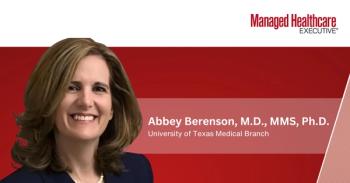
Overlap of Upper Airway Diseases Increases Risk of Outpatient Visit Burden
Patients with chronic rhinosinusitis with nasal polyps had the greatest number of outpatient visits and the shortest time between visits.
Upper airway diseases have a strong overlap and patients with chronic rhinosinusitis with nasal polyps (CRSwNP) had the largest burden with the greatest number of outpatient visits and the highest relative proportion of acute exacerbations, according to a study
The research was conducted using hospital registry data of a sample of 5080 patients diagnosed with rhinitis/rhinosinusitis between 2005 and 2019. The purpose was to evaluate the relative proportion of non-steroidal anti-inflammatory drug-exacerbated respiratory disease (NERD) and other comorbidities, as well as the impact on outpatient visits.
Chronic inflammatory sinonasal diseases “carry a significant health and economic burden,” wrote the researchers from University of Helsinki, and “Multiple chronic conditions have been shown to increase the frequency of physician visits.” These diseases include chronic rhinosinusitis (CRS), allergic rhinitis (AR), acute rhinosinusitis (ARS) and non-allergic rhinitis (NAR). Within the CRS group is CRS with and without nasal polyps (CRSwNP and CRSsNP).
These diseases are the result of both genetic disposition and host-environmental interactions. Of the 10% of patients who have severe disease, “70% have type 2 (eosinophilic) inflammation, CRSwNP, asthma/allergic multi-morbidity, and/or NERD, whereas the remaining part of the uncontrolled cases has variable risk factors.”
Of the 5,080 patients included, 33.3% had AR, 27.5% had NAR, 27.2% had ARS, 20.7% had CRSsNP and 10.9% had CRSwNP. The mean follow-up was 8.5 years, and more than half of patients were female. The subgroup of CRSwNP was the only one in which more than half of patients were male.
Patients with AR were the youngest while patients with CRSwNP were the oldest. NERD existed in just 3.9% of all patients, but patients with CRSwNP had the highest proportion (17.7%).
In the majority (89.1%) of cases, patients had at least 1 other comorbidity with asthma being the most common (44.4%). The CRSwNP group had the highest proportion of asthma (48.6%). The study also found that patients with CRSwNP with acute exacerbations had the highest relative proportion of most other diseases.
The common comorbidities were:
- Musculoskeletal diseases (38.4%)
- Cardiovascular diseases (35.7%)
- Mental disorders (18.9%)
Patients with recurrent ARS had the highest proportion of both musculoskeletal (49.7%) and mental disorders (22.3%). Patients with CRSwNP had the highest proportion of cardiovascular diseases (41.3%).
There is also a strong overlap of these upper respiratory diseases, according to the researchers. AR/NAR/ARS/CRS diagnoses coexisted in about a fifth of cases.
The mean number of visits for all patients was 5.1. Patients with AR had the lowest number of outpatient visits (mean, 3.0) while patients with CRSwNP had the highest number of visits (mean, 10.2) during the follow-up period. The mean time interval between visits was 227.1 days for all patients. The patients with recurrent ARS had the longest mean time between visits (43.4 days) compared with patients with CRSwNP who had the shortest interval (5.3 days). In general, patients with a higher number of visits had shorter intervals between them, the researchers noted.
They also found variables that were positively associated with visit frequency. There were 23 variables in total, and these included age, diabetes, chronic lung disease, obesity, cancer, NAR, any CRS, CRSsNP, CRSwNP, recurrent ARS, CRS with acute exacerbations, and CRSwNP with acute exacerbations. However, AR and ARS were both negatively associated with visit frequency.
“The number of inflammatory upper airway diseases increased the risk of visit burden,” the researchers wrote. “This result could help in patient counseling and planning of treatment processes.”
Newsletter
Get the latest industry news, event updates, and more from Managed healthcare Executive.



















































